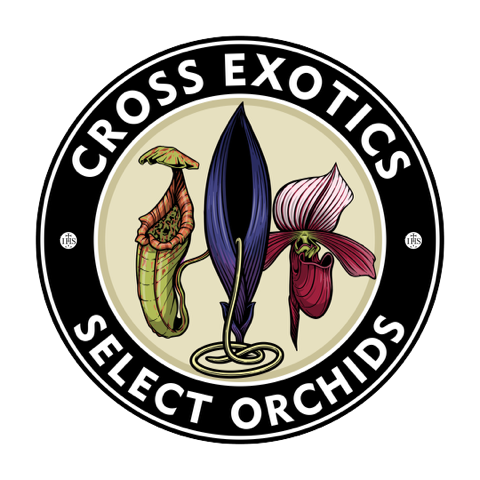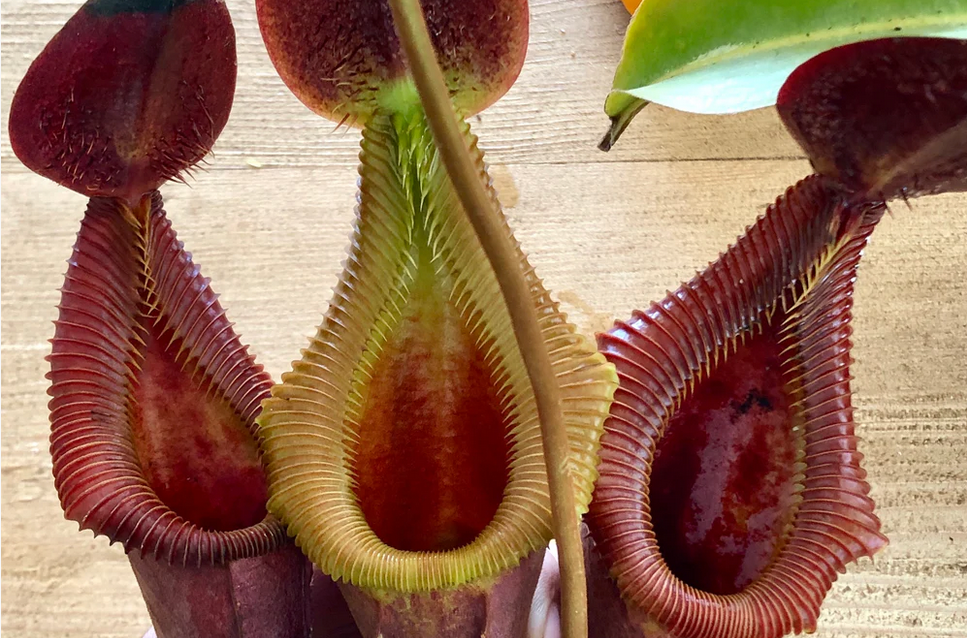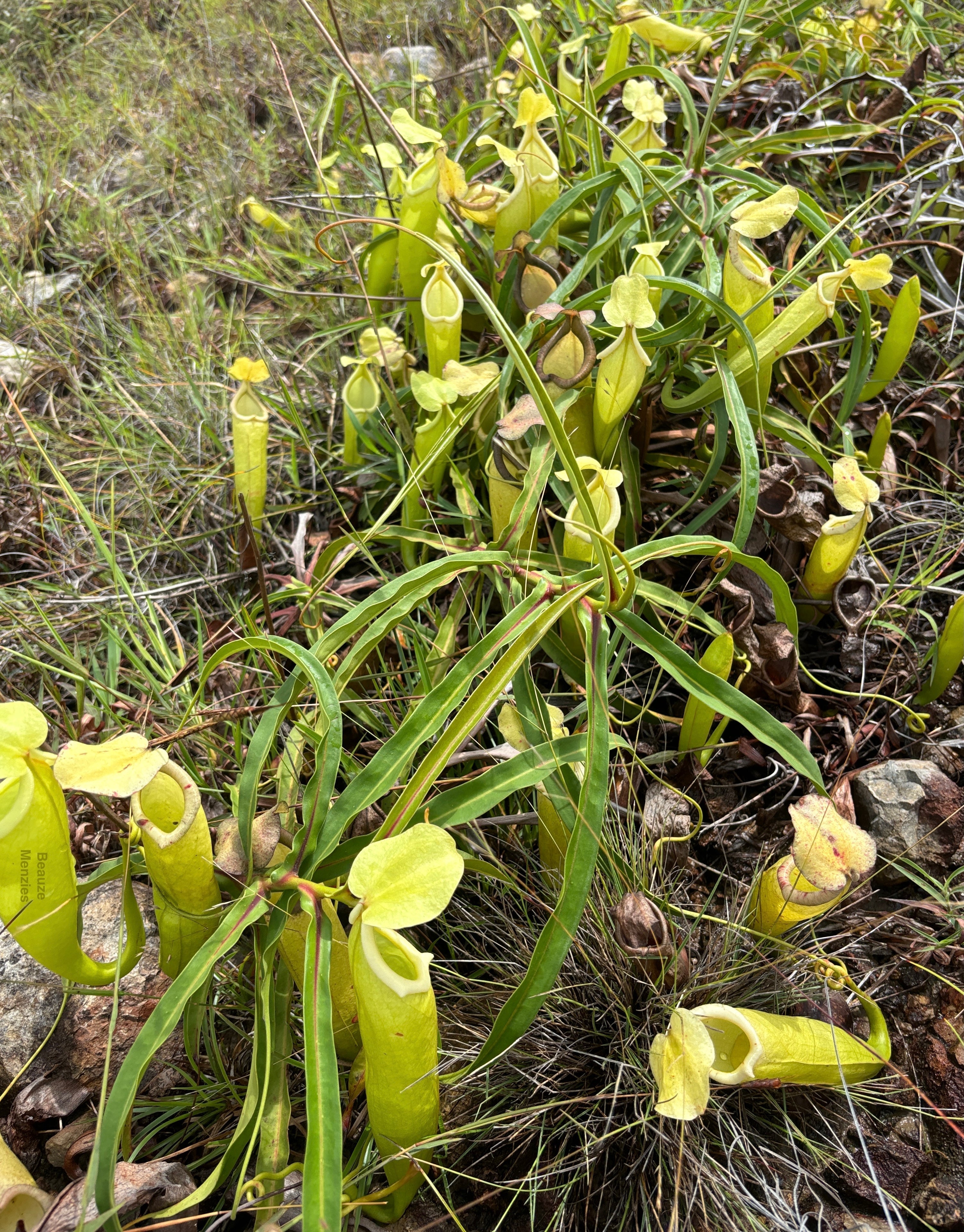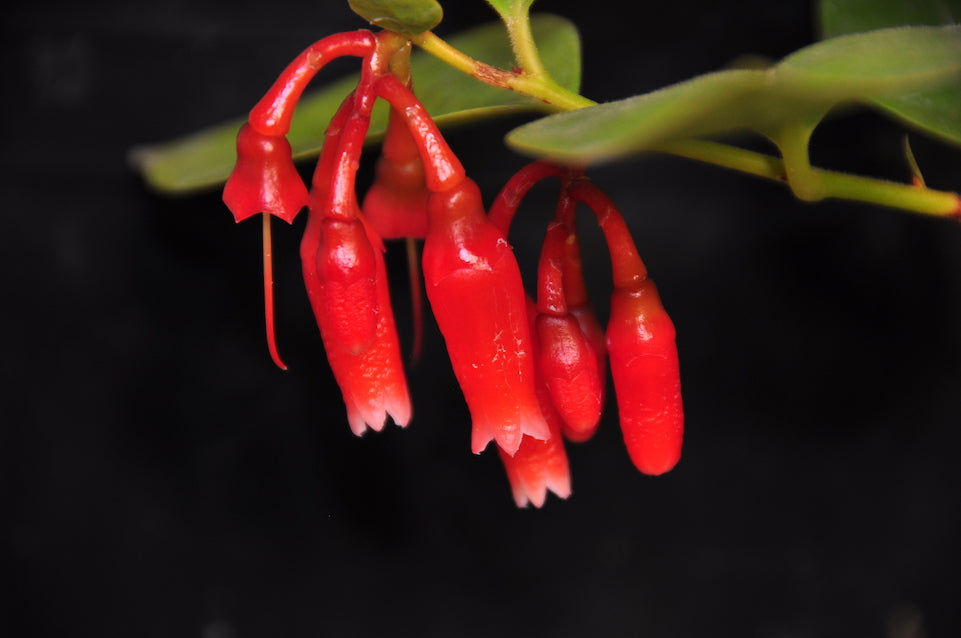Nepenthes Hybridization I

In American and European cultivation, it is without a doubt that hybrid Nepenthes exceed in number the amount of plants of actual species. Since the beginning of Nepenthes cultivation back in the Victorian era, this genus has proven itself to be very amenable to the making of hybrids, in no small part because they are dioecious, and it is difficult to have a male and female plant of the same species blooming at the same time. In addition, almost all the species are compatible with each other unlike many plant genera which will refuse to hybridize with related species, and even most Nepenthes hybrids are fertile. As a result, a number of hybrids have been made, especially hybrids with the most desirable species such as N. edwardsiana. The hybridization has gotten so extreme in some cases that some species such as the aforementioned N. edwardsiana along with N. robcantleyi and hamata have been crossed with almost every other species in cultivation. Many of these hybrids that once represented something rare and unique but possibly obtainable are now just another hybrid on a long list of other hybrids that for the most part are not spectacular. However, it goes without saying that hybrids are typically much easier growing than species which makes them quite rewarding, and some really are worth growing even if one does not like hybrids.
Back in the early days from the Victorian era onwards, the most common hybrids were between the various lowland and intermediate species. This is because the lowlanders were much easier and faster to grow in the hot greenhouses than the highland species. Today we still have traces of this time of lowland hybridization in hybrids like the male N. x dyeriana clone which is a complex hybrid supposedly having survived all these years in cultivation since it was originally made in the Victorian era. These lowland/intermediate weedy hybrids were a novelty to the upper classes and exotic plant collectors. However, the real goal of all dedicated Nepenthes growers was to be able to grow the highland Nepenthes which in these early days was simply not possible long term as sufficient knowledge and technology was not available. Eventually truly growing highland Nepenthes started to become possible and the few people who knew about this fascinating genus began to collect them in earnest. With low availability it became clear that mass propagation must be attempted and since cuttings and seeds were proving too slow, it left only tissue culture as a sustainable way to propagate Nepenthes swiftly and sustainably to satisfy demand. It was only a matter of time before highland hybrids between the species everyone dreamed of having would happen.
The most wanted species of Nepenthes was edwardsiana and today it is reasonable to say that it still is. In the early 2000s, this species was practically impossible to obtain and thus a substitute was needed. N. villosa was toothy but too slow, and most importantly it was not close enough to the rare edwardsiana. The famous “poacher’s hybrid” Nepenthes x harryana was even more impossible to get than edwardsiana at the time. Then Malesiana Tropicals discovered a hybrid in some wild burbidgeae seeds that Chien Lee collected. It had some teeth. Based on the plants nearby to the burbidgeae they decided it was burbidgeae x edwardsiana and capitalized on the extreme demand for “eddy.” This hybrid is clearly in fact burbidgeae x villosa as all the traits point to villosa and not edwardsiana. A horticultural cross of burb x eddy was made more recently by Klaus Keller, and it also differs vastly in appearance from the Malesiana Tropicals cross. At the time though, while some had doubts about the label, there was no way to prove that it was not burbidgeae x edwardsiana as no horticultural hybrids had yet been made with edwardsiana.
Years later, the German grower Michael Schach who is mostly known for his Heliamphora clones, bloomed his N. edwardsiana which turned out to be male. This resulted in one of the first if not the first horticultural N. edwardsiana hybrids, N. hamata x edwardsiana. This hybrid has remained one of the best hybrids made thus far and has been remade by other growers since such as Robin Hirst, Mike Smith, and the reverse by Jeremiah Harris. In addition, Schach’s edwardsiana would end up crossed with N. aristolochoides, flava, tenuis, izumiae, rajah, and spathulata, the later cross having been made at least 3 times by various growers for no apparent reason. In my opinion, these Schach eddy crosses are some of the best eddy hybrids made and few new crosses exceed them in quality.
Since those eddy crosses, many more have been made, some legitimately interesting while others seem to have been made merely to make something new. Among these latter ones is the exceedingly boring N. maxima x edwardsiana which has been made a few times now. The resulting cross generally lacks all the good traits of maxima and its peristome is just slightly ridged. Fortunately, despite the number of these that have been made and released, it is rarely seen and with luck it will go extinct in cultivation never to be made again.
Similarly perplexing hybrids are those made between species that are complete opposites. While such a cross like rajah x argentii, the generally agreed largest and smallest species, would be exciting even just to see what the end result looks like, that is not the sort of hybrids being made, and even those two species have complementing traits. Instead, we see crosses between the high potential toothy N. diabolica and the small dainty toothless Sumatran species and also hybrids between toothy species with flat peristome species like platychila. The results are mediocre with traits from the parents muted and washed out, platychila x villosa a case in point. While some of these are intriguing especially if one has the space, they do not have much going for them.
A critical factor in hybrids is if it sounds good otherwise no one will want it. N. mirabilis x jacquelineae for instance sounds dreadful. In fact, anything crossed with mirabilis sounds terrible. However, we often see such hybrids between a good parent and a species that is unique in its own right yet should never be used in hybrids such as thorelii. On the other hand, some hybrids that sound good in name are in fact not, for instance rajah x platychila or robcantleyi x clipeata. This is cause most of the time the end result is not thought about when making a hybrid so it is important to consider not just what sounds good but also which plants will blend well together to make something worth growing. Many great hybrids are like this in fact, one parent being something very desirable and nice, while the other is a nice but often-overlooked species that complements it. N. rajah x mira comes to mind along with N. ventricosa hybrids. Of course, there is certainly many hybrids between desirable species that are excellent such as the previously mentioned hamata x edwardsiana, diabolica x hamata, edwardsiana x mollis, and so on.
This also brings into consideration the high prevalence of ventricosa and truncata hybrids. Both of these Philippine species have found their way into hybrids due to their adaptability and flowering at smaller sizes. In cultivation, while it is easy to think one has large Nepenthes, they are in fact very small in comparison to the size of wild mature Nepenthes, so it is not so surprising that many Nepenthes are stubborn bloomers in cultivation. Both ventricosa and truncata generally make good hybrids that are quite popular, including lowii x truncata which is widely considered one of the best hybrids yet. Ventricosa is often considered a beginner’s plant yet in hybrids it is not too dominant in pitcher traits which lets the other parent shine through. One instance of this was when Johannes Marabini crossed his female lowii with ventricosa and many seedlings resulted. One of these seedlings was later named by US grower William Baumgartl after Peter D’Amato and the resulting “briggsiana” clone has since spread widely and is enjoyed for its lowii shape - without lowii’s slowness! Similarly, ventricosa x ephippiata was one of the few ephip hybrids that Exotica Plants released along with the impressively sized truncata x ephippiata. Both hybrids turned out great and are the only really available ephip hybrids in cultivation although not as stunning as Robert Severitt’s original N. lowii x ephippiata.
Unfortunately, despite the great potential of ephippiata hybrids there are very few in existence and there are few blooming size ephippiata in cultivation, at least in the US and EU markets. While EP did make a few other ephippiata hybrids and released the natural hybrid ephippiata Hose Mtns x glandulifera, it seems that they have stopped making ephip hybrids - presumably the male died. It seems the future for good ephip hybrids is in using lowii x ephip as a parent in complex hybrids until blooming ephippiata become more common, this step has already been taken by a few German growers such as Stefan Gladisch who made robcantleyi x (lowii x ephip) and ventricosa x (lowii x ephip). Another high potential hybrid is (truncata x ephip) x lowii which I think will end up as nice as lowii x ephip but with some slight differences. However, with the recent blooming of BE’s male ephippiata there is some potential that this shortage of ephip hybrids could be fixed in the coming years.
Certainly, a lot more could be said about this subject of hybridization and its history, but I think that this is a good compilation for now. These tangents to be continued!



